Aswan Travel Guide
The Best Off-the-Beaten-Path SightsOff-the-Beaten-Path Aswan
Last Updated: 25 Feb 2023.
Aswan is one of the most touristy cities in Egypt and for good reason. Its relaxed atmosphere, beautiful location on the Nile and the chill Elephantine Island make it the ideal place to hang out for a few days. It’s also less hassle than Luxor, without the hawkers trying to sell you something every 100m.
This travel guide includes everything the more adventurous traveller needs to make the most of Aswan. There are plenty of blogs out there already on the more touristy side of the city, so I’ve focussed on some off-the-beaten track gems that most people overlook.
Note: Some prices are in US dollars to ensure they stay current given the high rate of inflation in Egypt. Expect to pay approximately the equivalent amount in EGP at the current exchange rate.
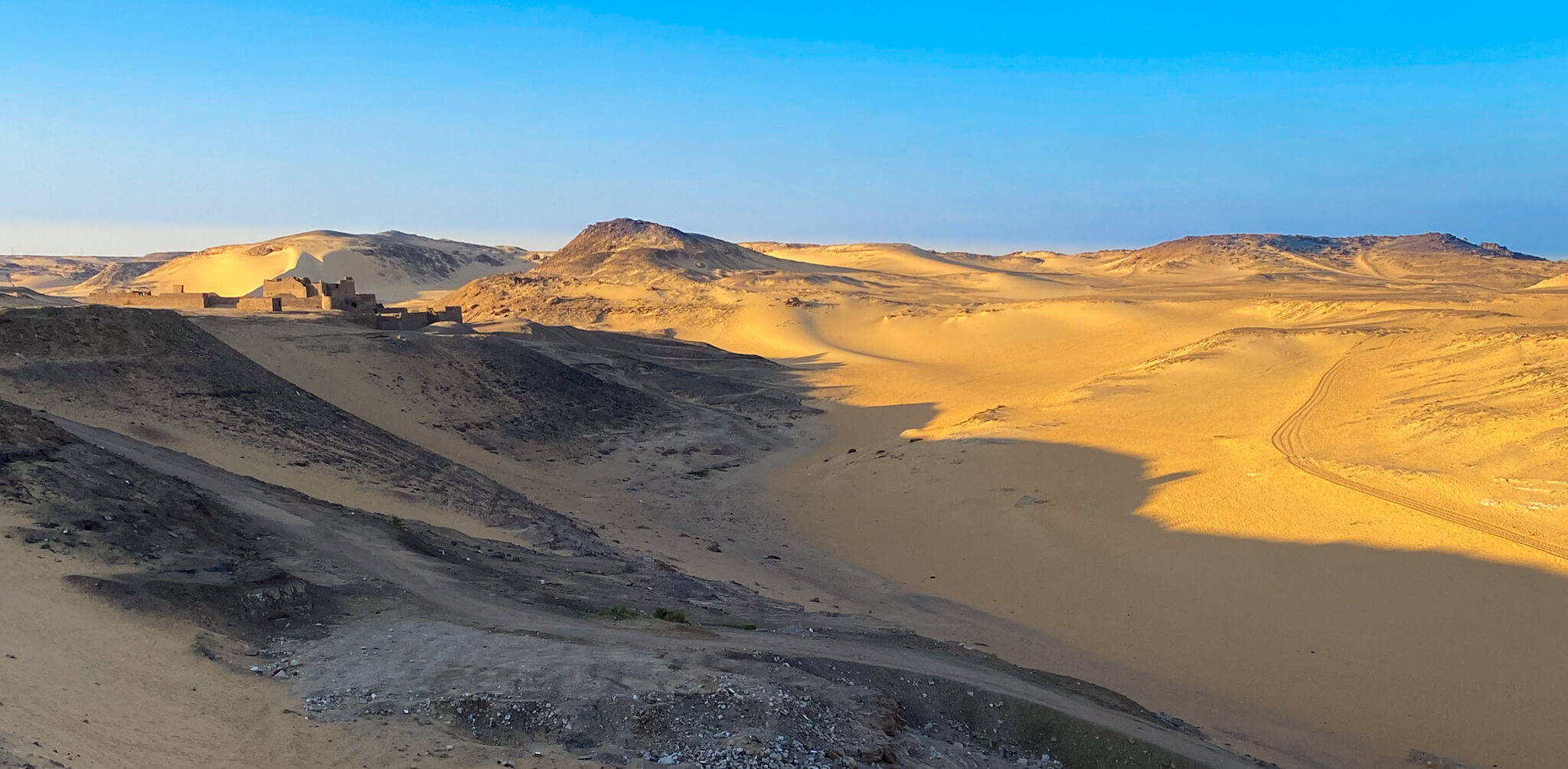
Crossing the plateau to the Monastery of St Simeon.
What to See and Do in Aswan
Aswan is the perfect city to chill and you can easily spend a few days just strolling around and enjoying the relaxed atmosphere, so be sure to leave some time for that. Then, when you’re ready, there are deserts, plantations, Nubian villages and nameless tombs all just a short distance away. The following are my recommendations for adventurous travellers in Aswan, starting with the ones I enjoyed the most.
Desert Hiking with Monasteries and Ancient Tombs
The western bank of the Nile at Aswan looks like a huge impenetrable sand drift that rises up sharply from the river. Above it is a desert plateau that few tourists visit. It’s possible to hike up this bank (up close it’s actually not steep) for beautiful views back across Aswan, Elephantine Island and the Nile river. From there, you’ll find an easy hike across the open desert at the top.
Far from being deserted, the desert is home to the ruins of the seventh-century Monastery of St. Simeon, which can be visited. Entrance is EGP 40 (€1.24/$1.31) per person. From there, you can follow a dirt road to the modern Monastery of St. Hedra, which still operates today. At the end of the road is the Mausoleum of Aga Khan, a modern building overlooking the Nile that is not accessible to the public.
The desert in this area is home to a large number of tombs and some areas are littered with ancient bones, especially near to the Aga Khan Mausoleum. Most of the tombs have been sealed off with metal doors, but we found one with the door missing. Inside was a mummy just lying there on the ground next to a sarcophagus. I could hardly believe my eyes when I saw it! A few bones and a couple of skulls lay next to it, plus some plastic bags full of other human remains.
The open tomb was a creepy find, but it was incredible to see all of these ancient artefacts just lying there in the open tomb. When we returned to our guest house on Elephantine Island that evening, we asked the owner about it. Apparently, there are literally thousands of old mummies lying around in the desert. He told us that in the past, during particularly hard times, locals would even burn old mummies as fuel for cooking.
From the Mausoleum of Aga Khan, it’s a short scramble back down to the banks of the Nile, where it’s easy to find a local boat to take you back across to Elephantine Island, which is directly opposite. We negotiated with a boat owner and eventually paid $2.10 for the short ride. The whole hike takes about 2-3 hours, but bring plenty of water, as it gets hot in the desert.
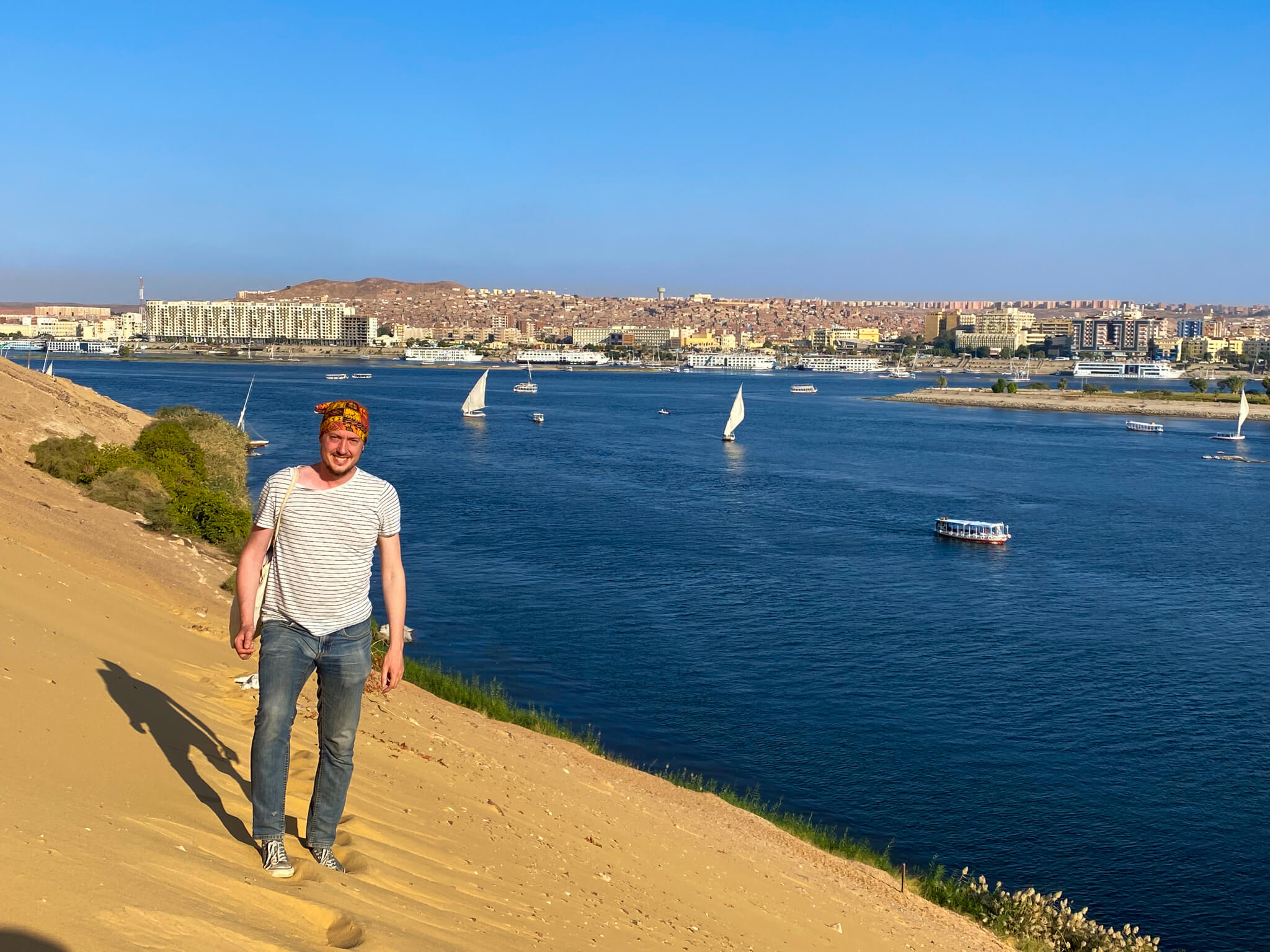
The first part of the hike is steep, but worth it for the beautiful views.
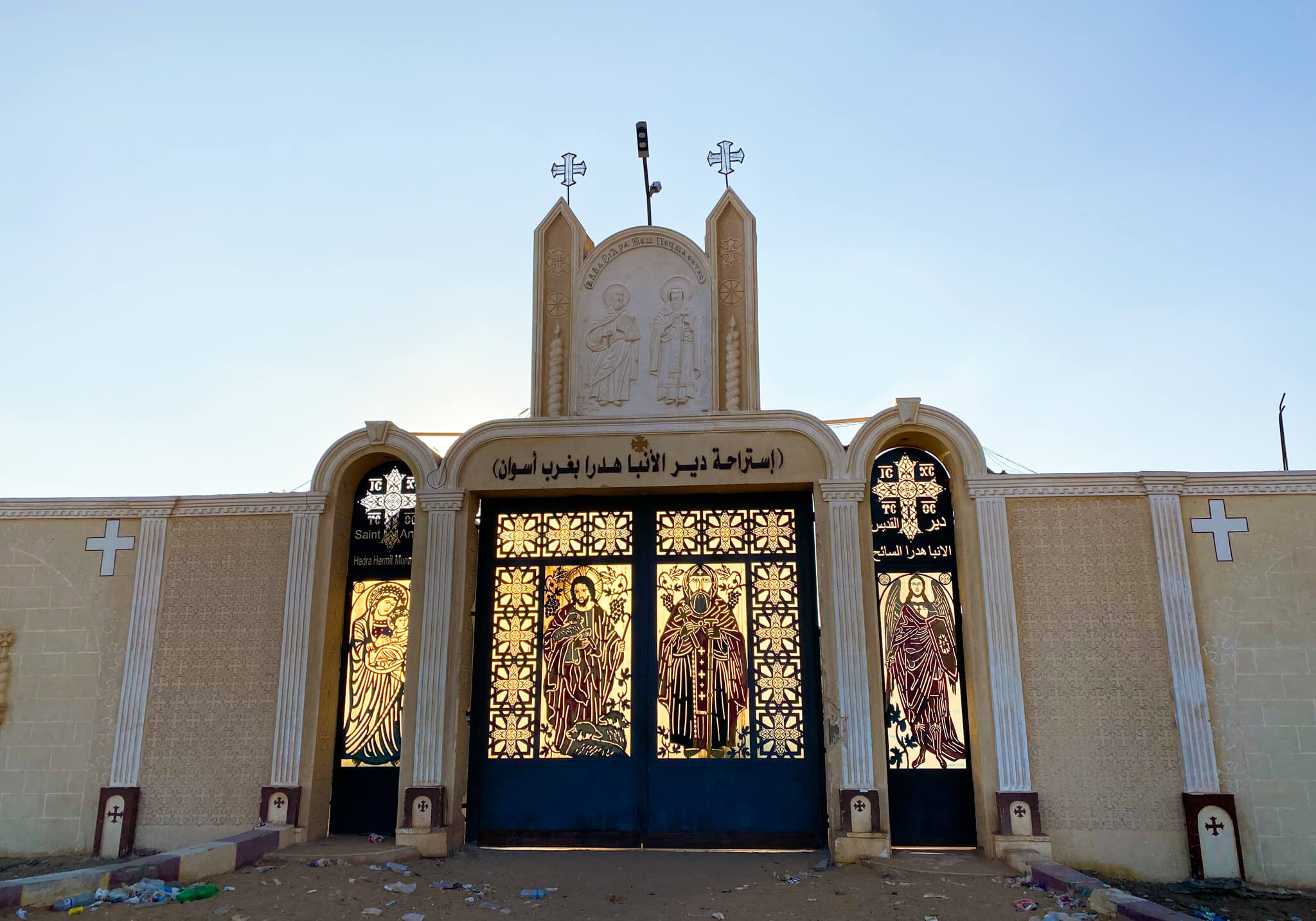
The Monastery of St. Hedra is closed to the public.
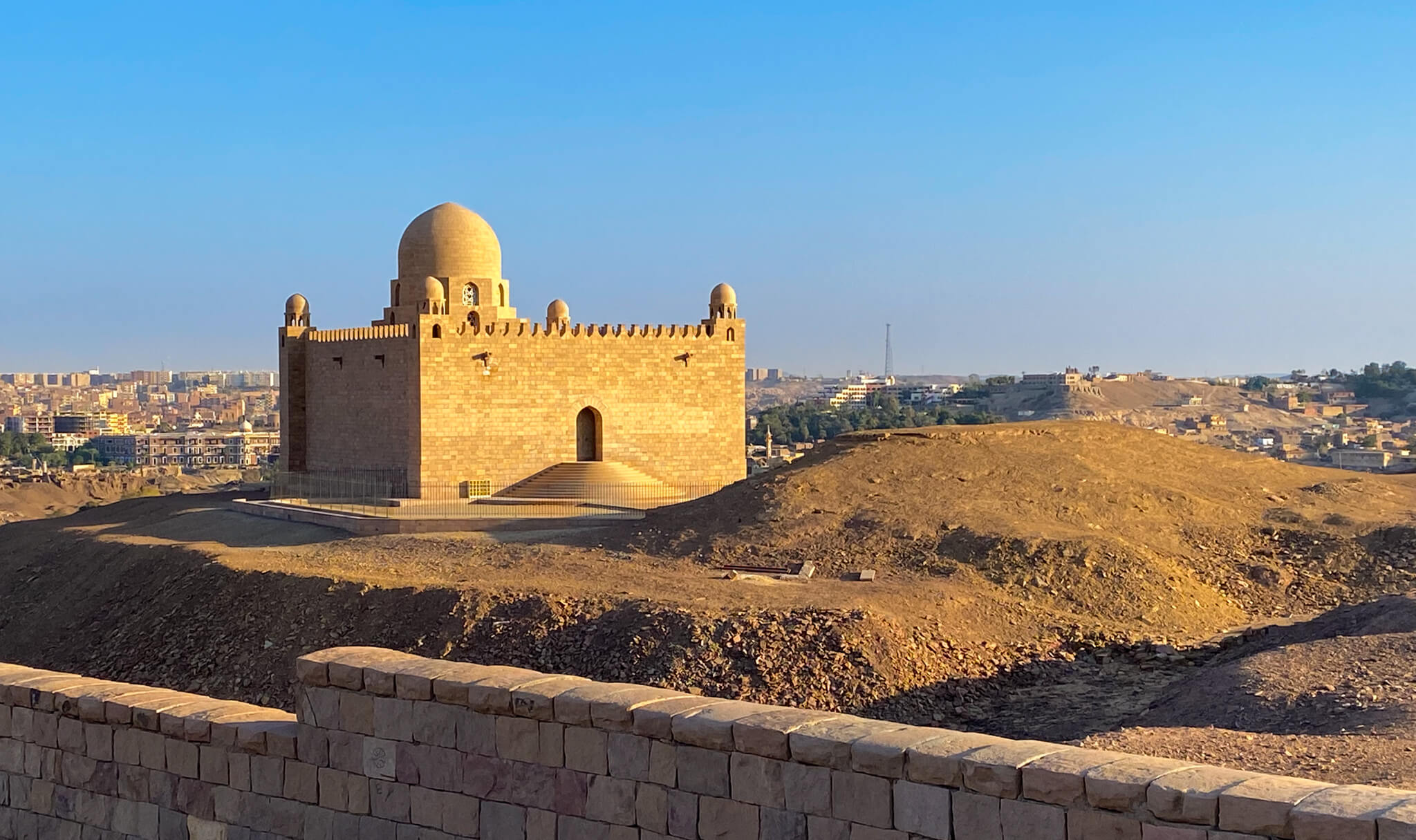
The Mausoleum of Aga Khan at sunset
Directions: The hike starts from the Tombs of the Nobles (see below for details). If you visit the tombs, you can simply start hiking from the top of the hill. If not, from the entrance to the tombs, head south (up the Nile) a little from the entrance and then start walking up the bank until you reach the top.
At the top, you will find a large and beautiful expanse of open desert. From here, you can head towards the ruins of the Monastery of St. Simeon (this is the location on Google Maps). From the entrance to the monastery, follow the road south past the Monastery of St. Hedra and then on to the Mausoleum of Aga Khan.
You will find many tombs in the desert by the mausoleum. The open tomb we found was located at this location on Google Maps, but may have been resealed again now. Look around in the desert nearby and you’ll find many stone staircases leading down to the entrances of tombs.
The easiest place to catch a boat back to Elephantine Island is on the nearby landing (here on Google Maps). If you’re not staying on the island, you can then catch the ferry back to Aswan city.
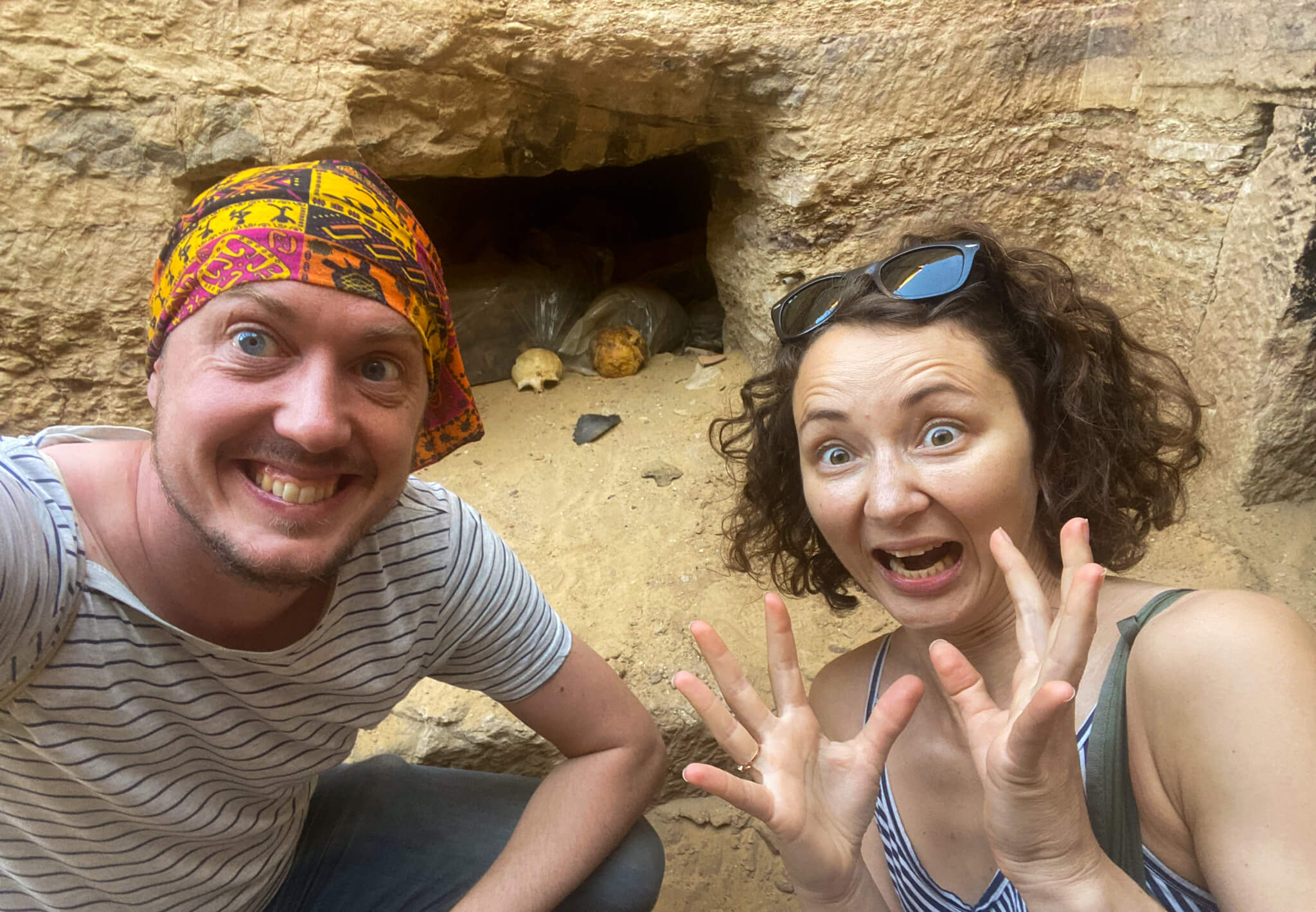
There are human bones just lying there in the desert, like these two skulls.
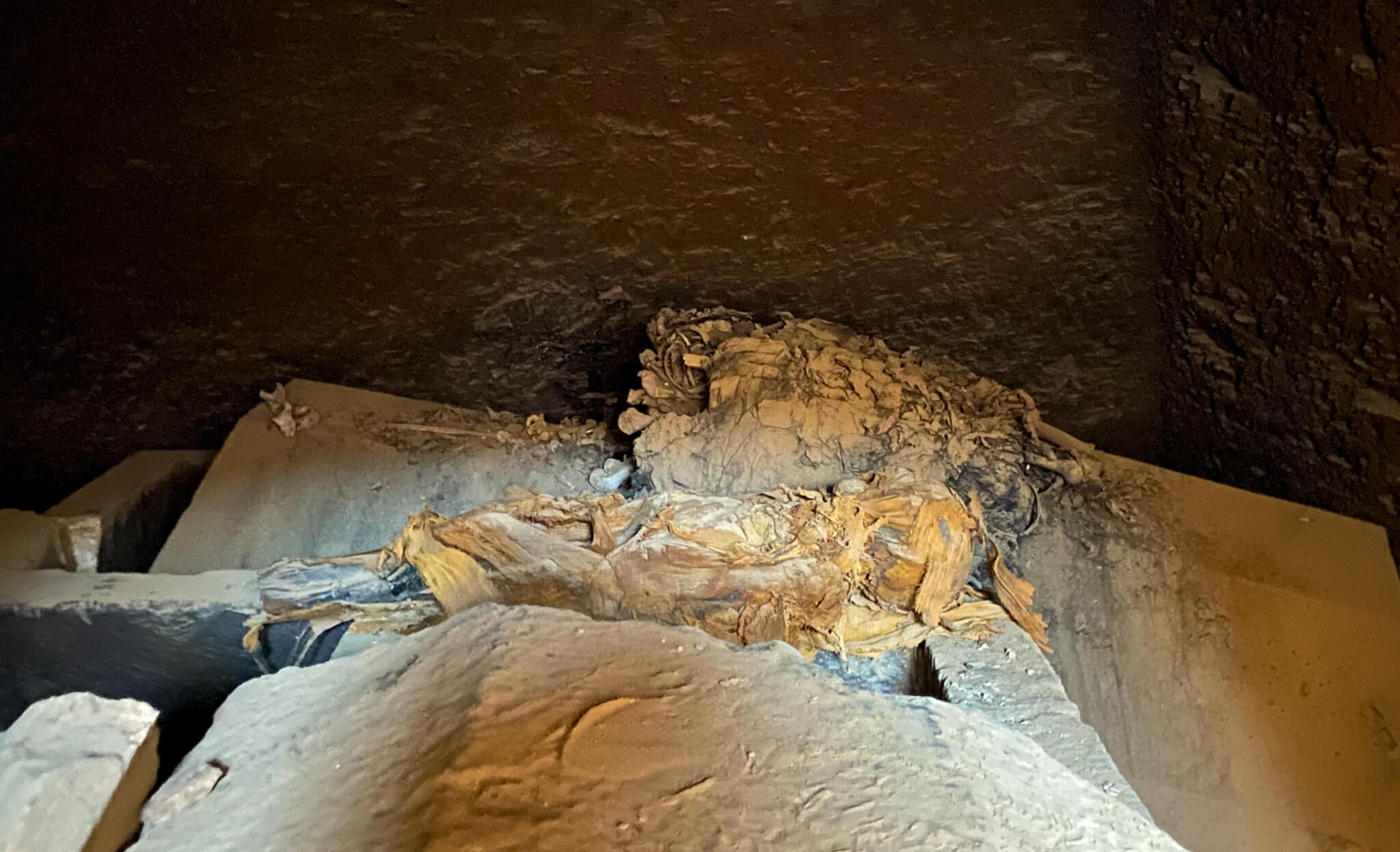
The door had been torn off this tomb and this mummy was lying inside.
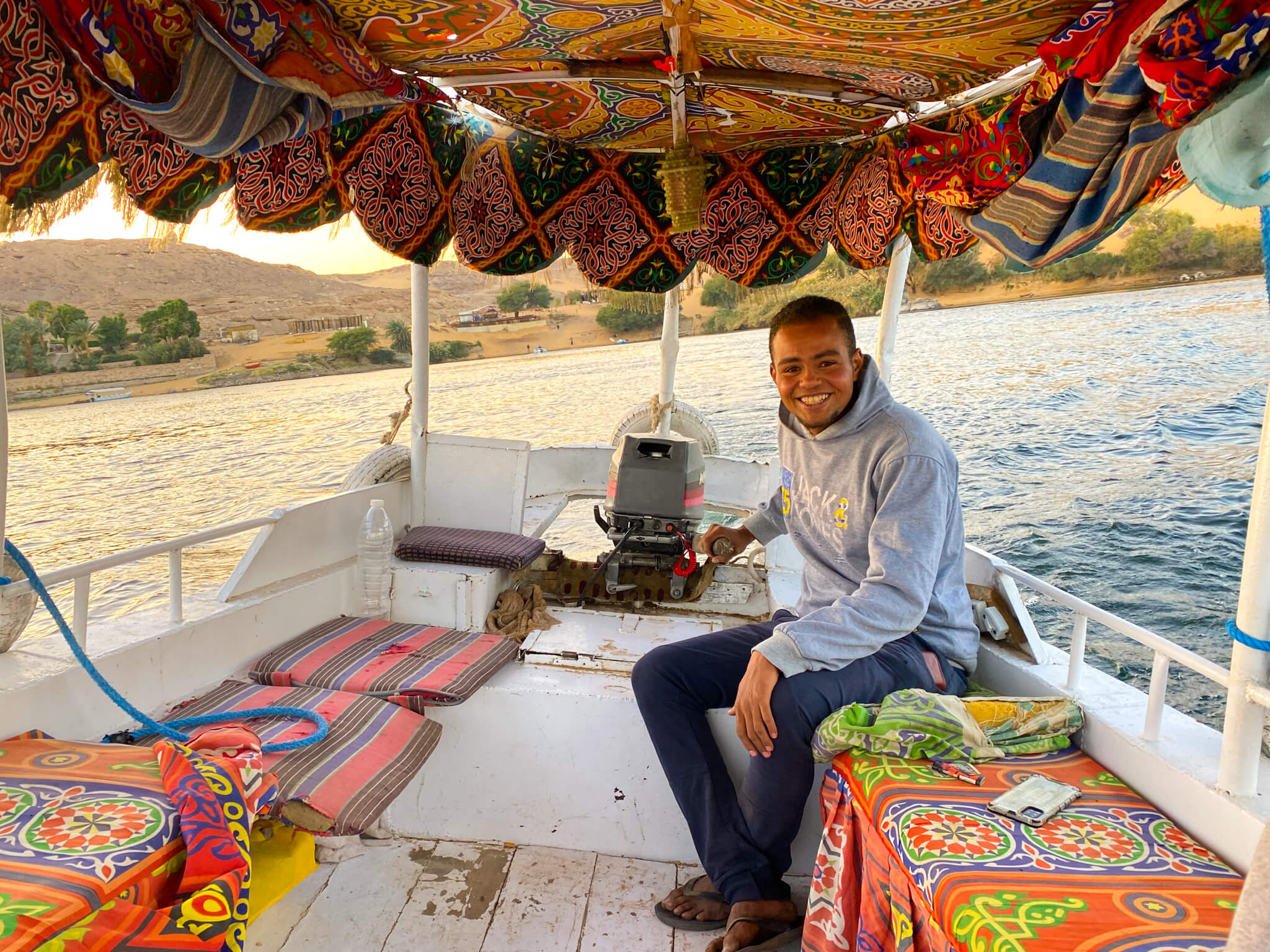
What a wonderful smile – I think we had the happiest skipper in Aswan!
Visiting Nubian Villages (but not the touristy ones!)
Aswan is located at the northern tip of Nubia, the home of the Nubian people for at least the last 4,500 years (now split between modern-day Egypt and Sudan). There are a number of Nubian villages around Aswan and even several tour companies organising tours to visit them. As a result, many of the villagers in these areas see tourists as walking ATMs and any chance of experiencing genuine Nubian culture has been lost.
There are a few villages that have been largely bypassed by the tours, so the trick is to visit one of these. I visited the villages of Nagel-Gulab and Nagaa Al Hamdlab and the nearby Nubian farmlands. These are all located on a stretch of road that runs for about 5km from the Tombs of the Nobles to the New Aswan City Bridge.
Don’t expect performances of traditional culture for foreign tourists. These are real villages with real people going about their daily lives, but that’s exactly what I came for. Many of the houses are decorated in the traditional Nubian style and the villagers generally either wave hello or pass on by without paying attention to a couple of wandering foreigners.
Part way along the road, you’ll find the Abu Al Hawa Cafe, a small tea house. Most likely, there will be groups of Nubian men sitting in the garden playing backgammon and chatting. The waiters speak a little English and it’s a great place to stop on the way through for a cup of Egyptian tea (remember to say if you don’t want ten teaspoons of sugar!). There’s also an extremely local (maybe too local for some people) restaurant next door. We stopped there for a simple local lunch, which cost $1.10 for two people!
As you continue, you will come to an area of lush farmland on the right hand side of the road. The waters of the Nile make the surrounding area famously fertile and we saw the biggest cabbages we’ve ever seen in our lives. It’s interesting to wander through the little paths between fields and see the different crops being grown, some of which don’t exist in the west. One that really caught my attention was a peculiar type of fruit used as animal feed – it looked like brains!
The Nubians still use many traditional farming methods that have long since been mechanised in Europe. One of the highlights was an ox-driven water wheel that was driving a traditional irrigation system.
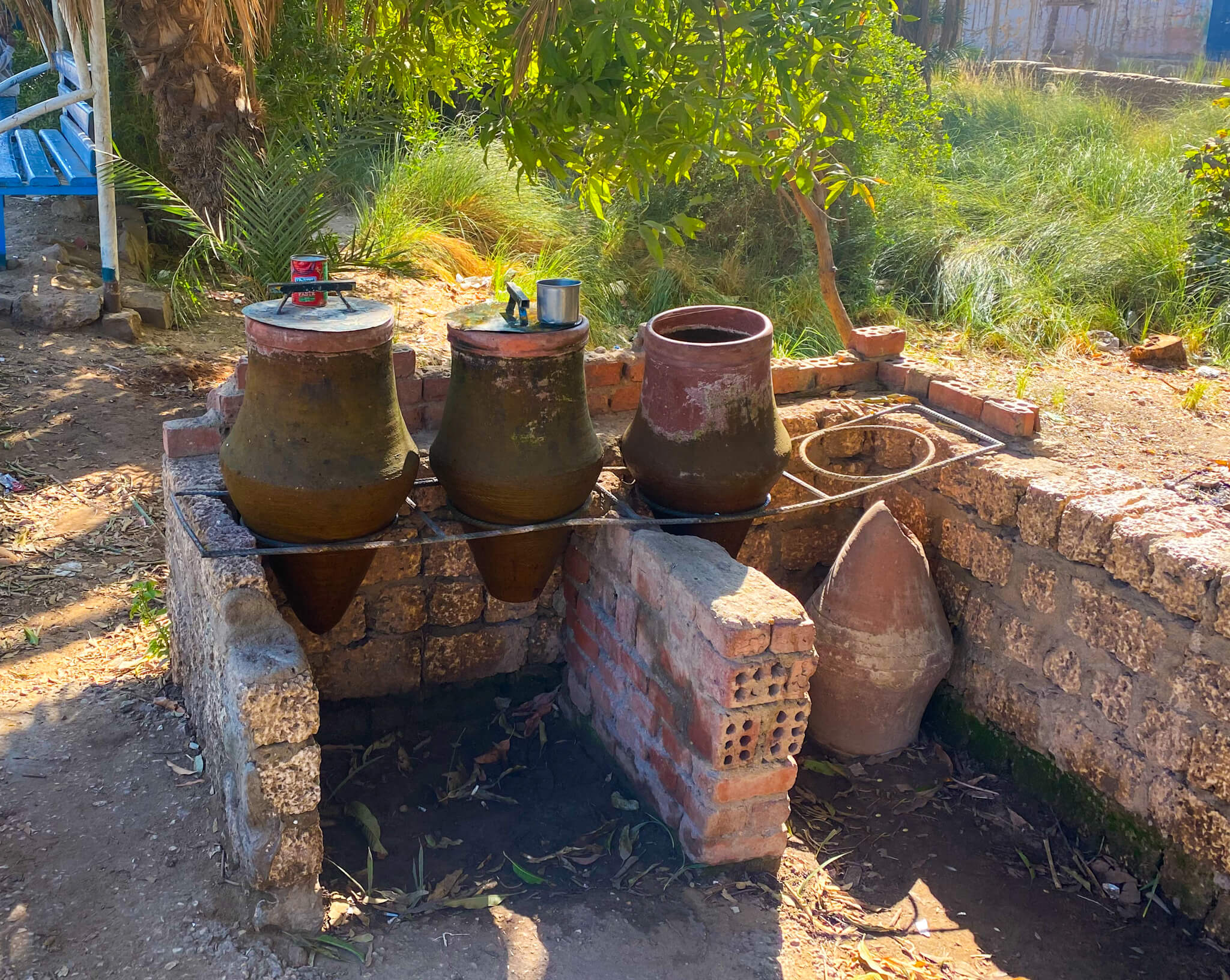
Nubians near Aswan use traditional clay pots of storing water.
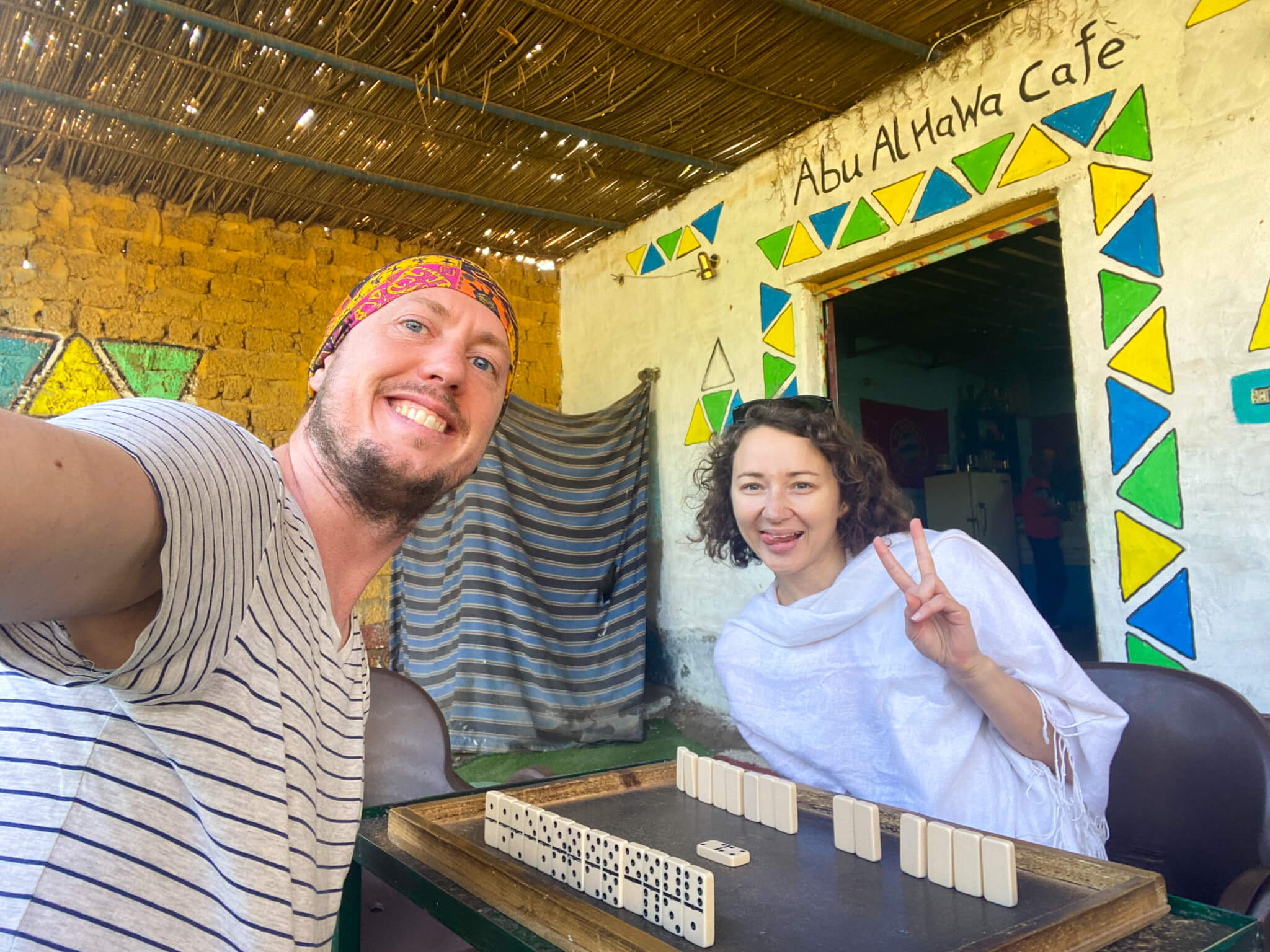
Playing dominoes at the Abu Al Hawa Cafe.
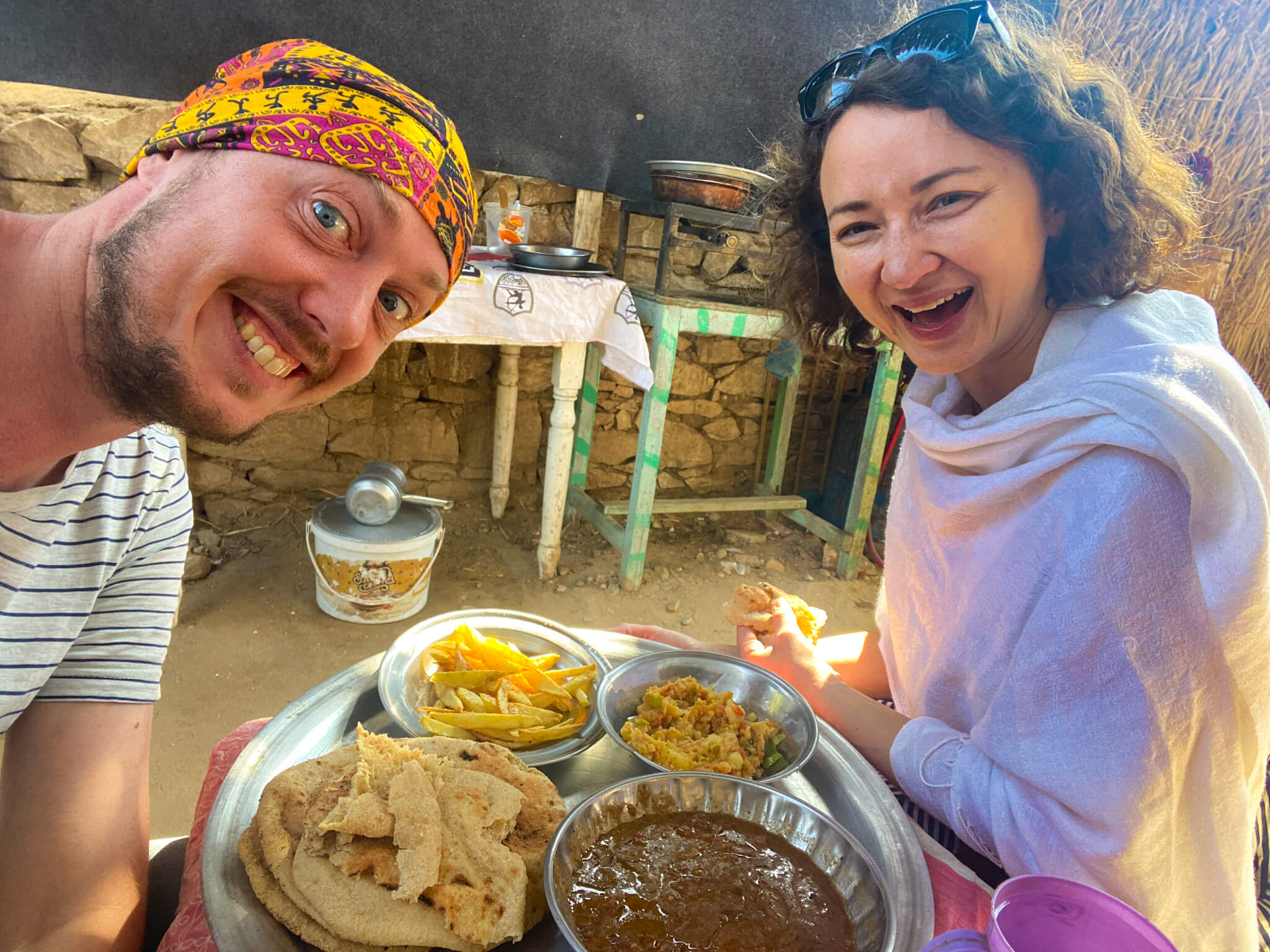
This amazing meal was €1 for the two of us!
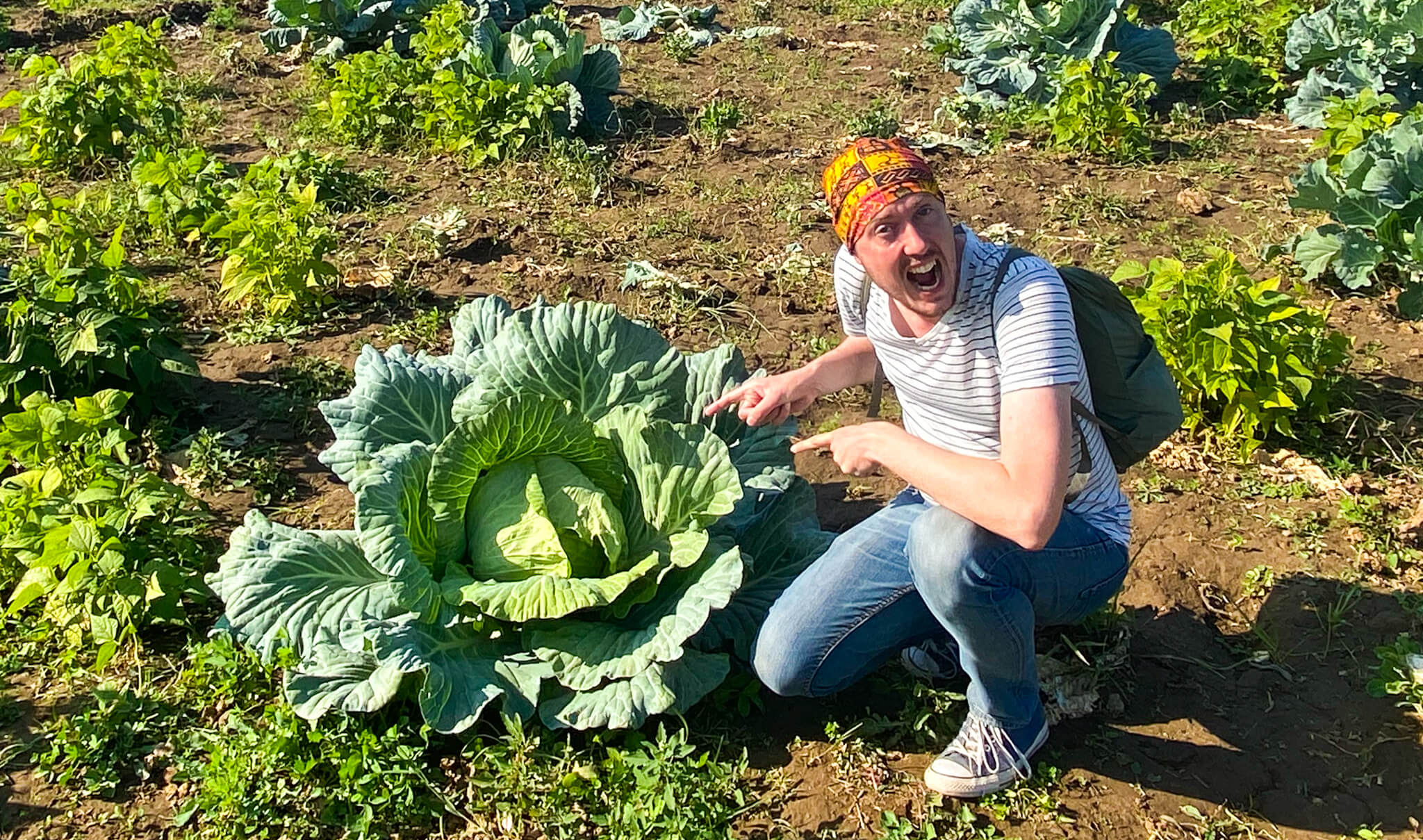
How is this possible? European cabbages are midgets in comparison.
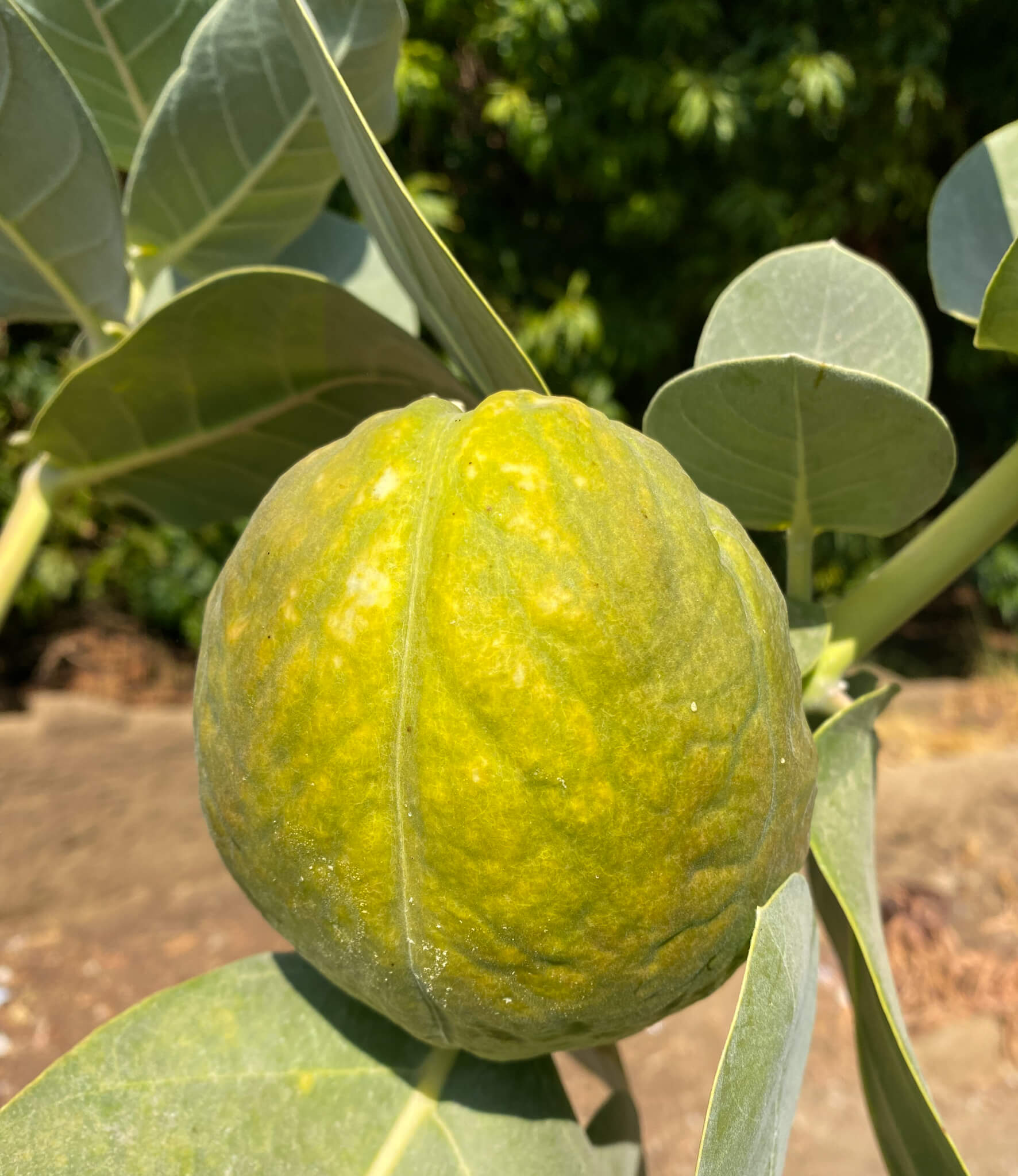
An Egyptian ‘Brain Fruit’
Directions: The walk starts from the Tombs of the Nobles (see directions below). From there, simply follow the only road northward as far as you want to go. You’ll find the plantations on your right after 2-3 kilometres.
There is public transport in the form of little pickups with seating in the back running up and down the road. When you’ve seen enough, look for the little bus shelters (see photo below) and just wait for the next one.
The bus pricing seems to be very fluid and if you’re not Egyptian, they will probably try to rip you off, so bargain hard. For two people to travel about 5km back to the Tombs of the Nobles, the driver tried to charge us $1.65 and we bargained it down to $0.55. I think we still paid slightly more than the locals, but it was close enough. When bargaining, don’t be afraid to say you’ll wait for the next vehicle – there are many.
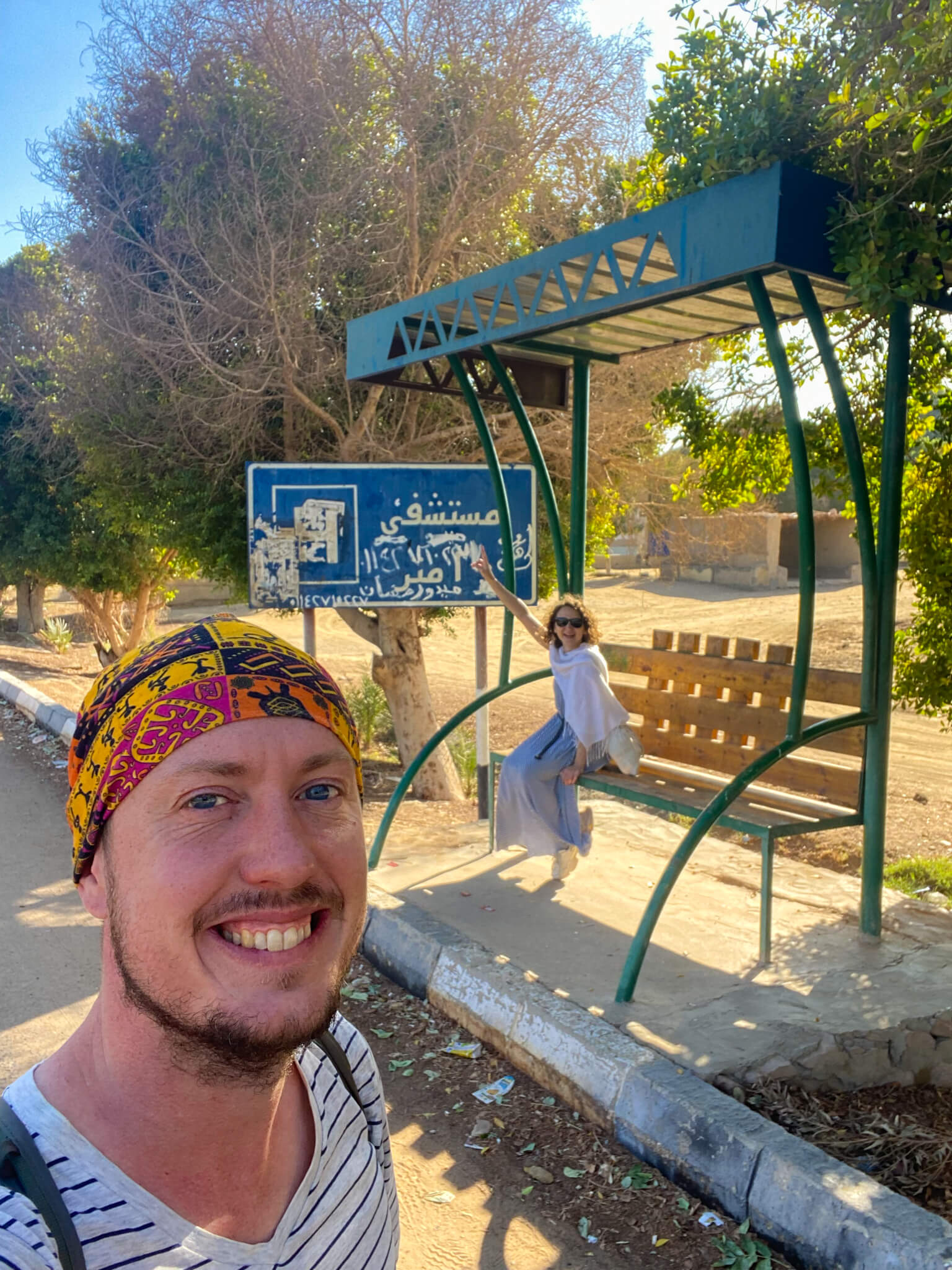
Waiting for the bus back.
The Tombs of the Nobles
Also known as the Tombs of Qubat El Hawa, the Tombs of the Nobles is the ancient burial site of many important figures from Nubian history. They include governors, the Keepers of the Gate of the South and other high-ranking government officials. The tombs are cut into the side of a hill rising from the western side of the Nile and six of them are open to the public.
During the day, the view from the top of the hill over Aswan and Elephantine Island is spectacular. At night, the Tombs of the Nobles are illuminated in yellow and white lights, creating a spectacle best viewed from the opposite side of the Nile.
Directions: To reach the Tombs of the Nobles from the main street of Aswan, go to the West Aswan Public Ferry Dock at the northern end of Kornish Al Nile street (the main street running by the Nile on the Eastern bank). There is a local ferry that departs about every 20 minutes (whenever it’s full) to the Tombs of the Nobles on the western riverbank. It costs EGP 5 (€0.15/$0.16).
Elephantine Island
Elephantine Island is a large island in the middle of the Nile River, a short ferry ride from the Aswan waterfront. It’s a beautiful and relaxing place to chill and packs a lot into a very small space. There is a beautiful (and surprisingly traditional) Nubian village, guest houses and restaurants, and the southern end of the island has both nature and a temple complex.
Directions: Elephantine island can be reached by public ferry from the Aswan waterfront for EGP 5 (€0.15/$0.16). On the southern end of the waterfront, they depart here, and at the northern end from here. The temples are located near the southern end of the Island. The entrance is at the location of the Temple of Satet on Google Maps. The island is small enough that you can walk anywhere in a few minutes.
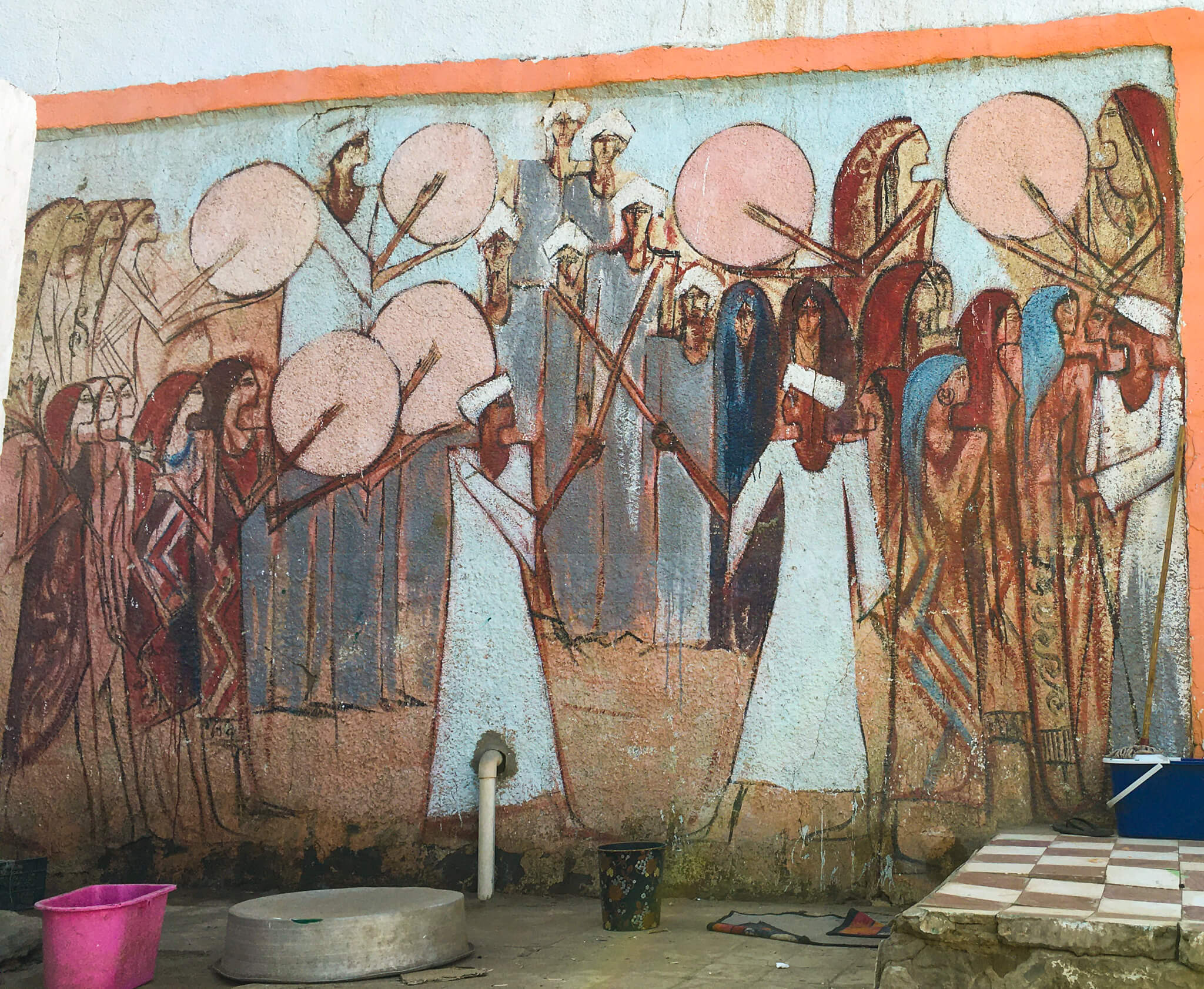
Nubian artwork on the buildings of Elephantine Island.
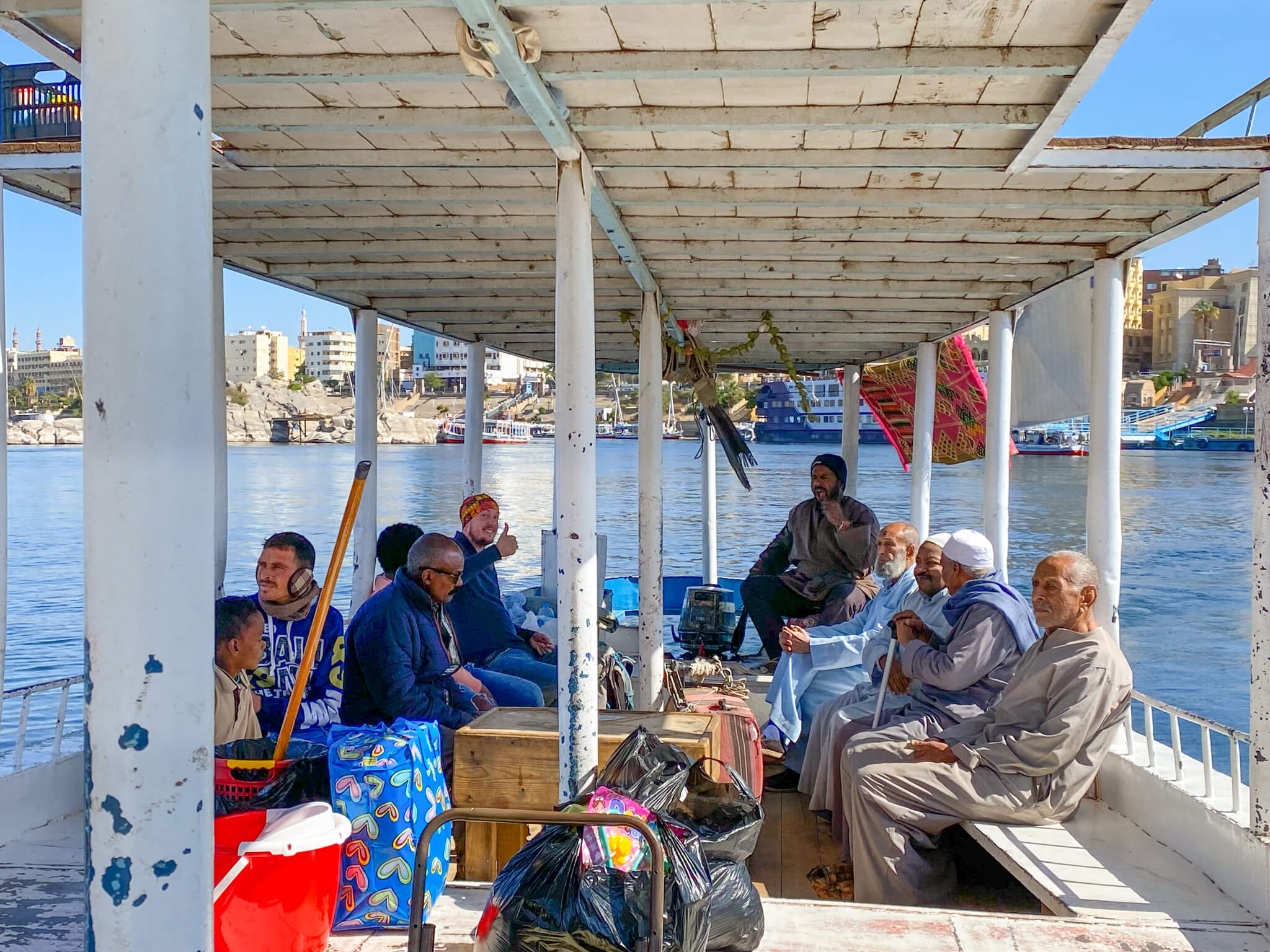
The ferry to Elephantine Island.
The Old Cataract Hotel
The Old Cataract Hotel is famous as the place where Agatha Christie wrote the novel Death on the Nile and a lot of tourists visit it for that reason. It also appears in the 1978 film adaptation. Bizarrely, the 2022 versions uses a replica built at a film studio instead. The hotel, which originally opened in 1899, was renovated and reopened in 2011.
Although the Old Cataract Hotel is now officially the Sofitel Legend Old Cataract Aswan Hotel, Sofitel has largely kept the original look of the building, right down to the Old Cataract Hotel sign above the entrance. It’s a beautiful old colonial building (although the modern extension is less beautiful) and worth checking out if you’ve read the novel or seen the film.
The hotel is very good at capitalising on the novel’s success. To enter, it’s mandatory for each person to buy a voucher with a minimum value of $16 to spend in the hotel’s bars and restaurants.
Directions: The Old Cataract Hotel is located at the southern end of Aswan’s waterfront (here on Google Maps).
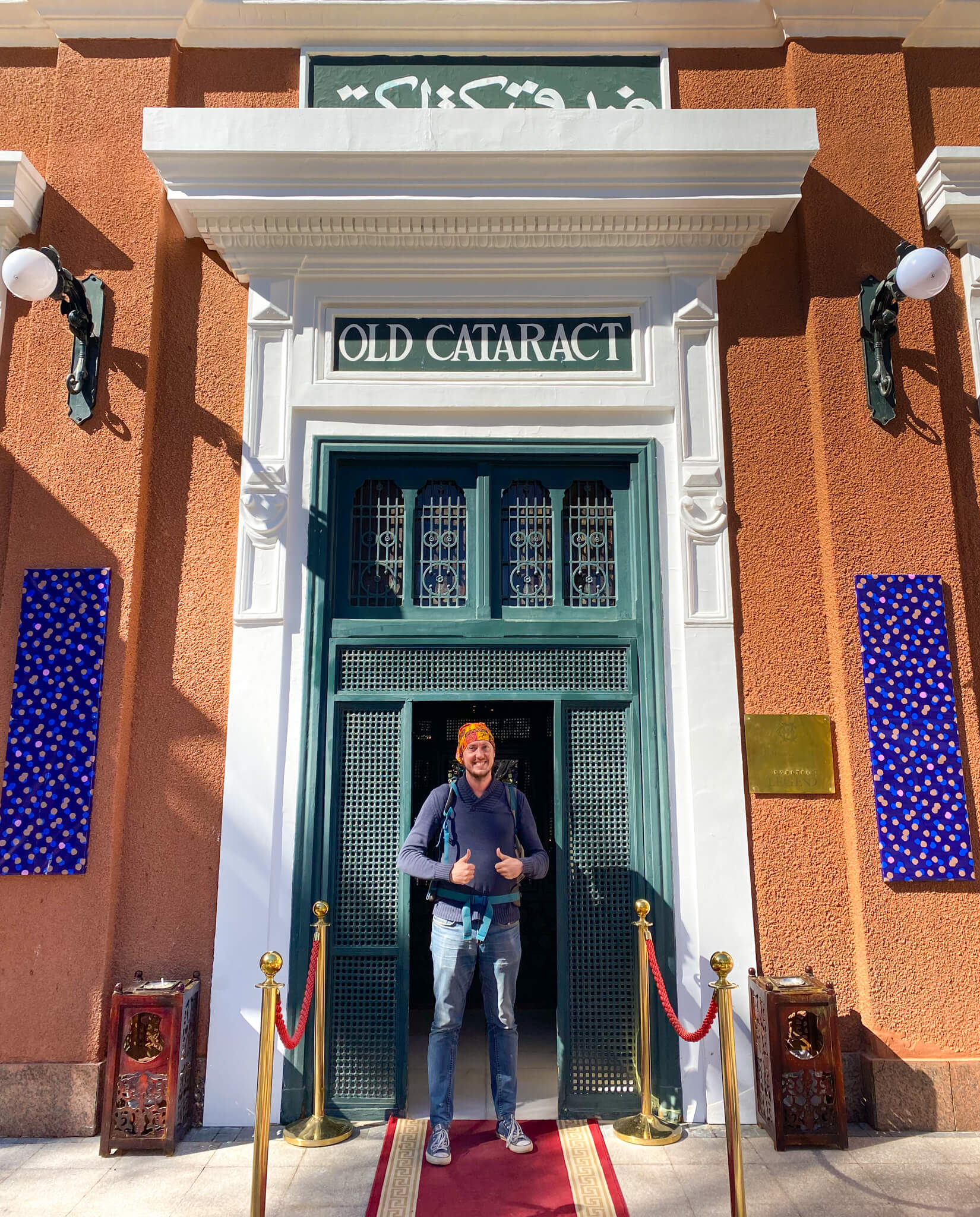
The entrance to the Old Cataract Hotel.
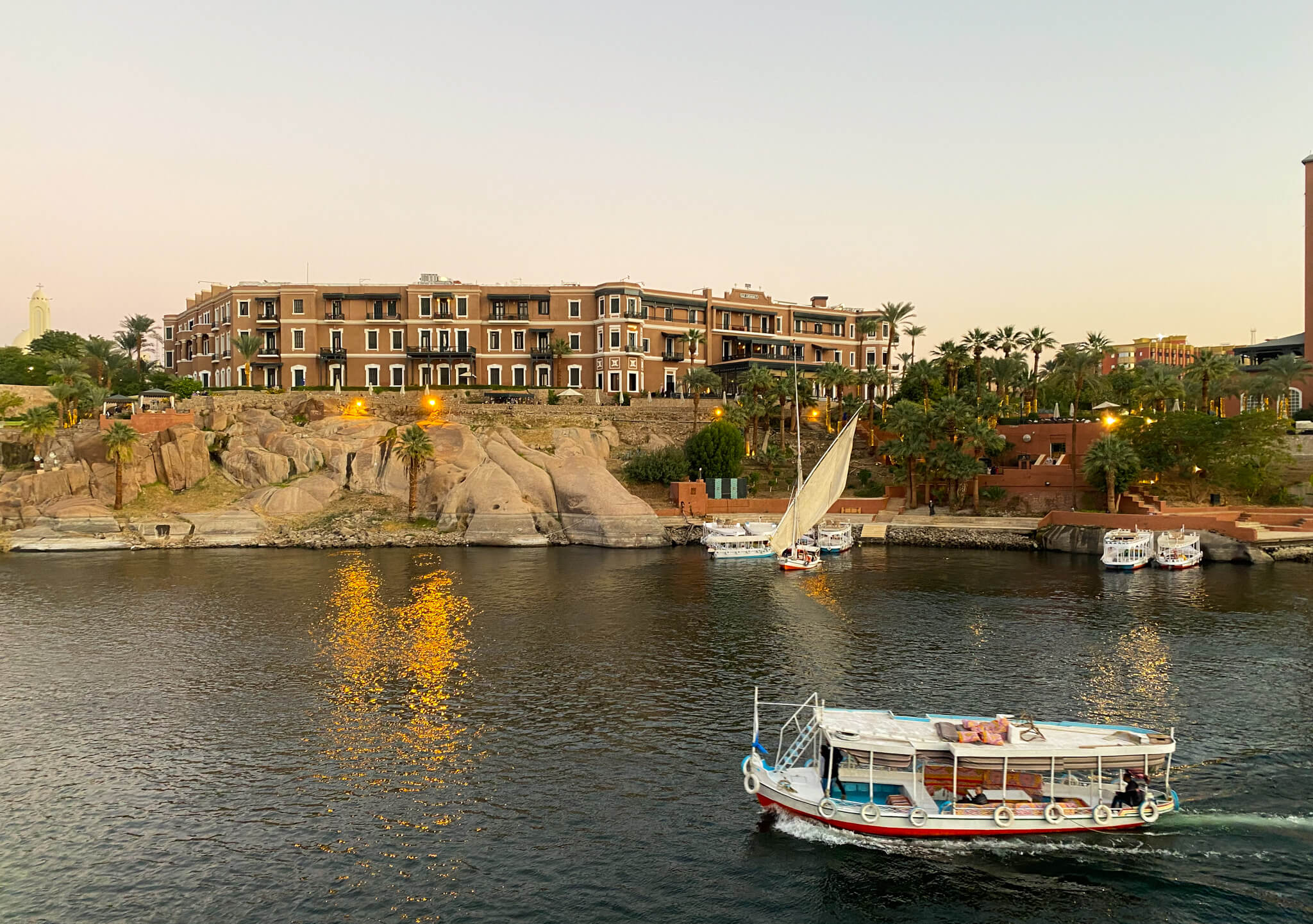
The Old Cataract at dusk. A very similar shot appears in the 1978 film adaptation of Death on the Nile.
The Unfinished Obelisk
The site of the Unfinished Obelisk is an old quarry in central Aswan where ancient Egyptians used to chisel obelisks from monolithic pieces of rock. As the name suggests, the centrepiece is an unfinished obelisk, lying on its side and still attached to the rock on its lower side. It’s truly huge. If you’ve seen the sites of Luxor and Abu Simbel, then it’s honestly not that spectacular, but worth a quick visit if you have time. Entrance is EGP 80 (€2.47/$2.61).
Directions: The Unfinished Obelisk in about half an hour’s walk from the Aswan waterfront (here on Google Maps).
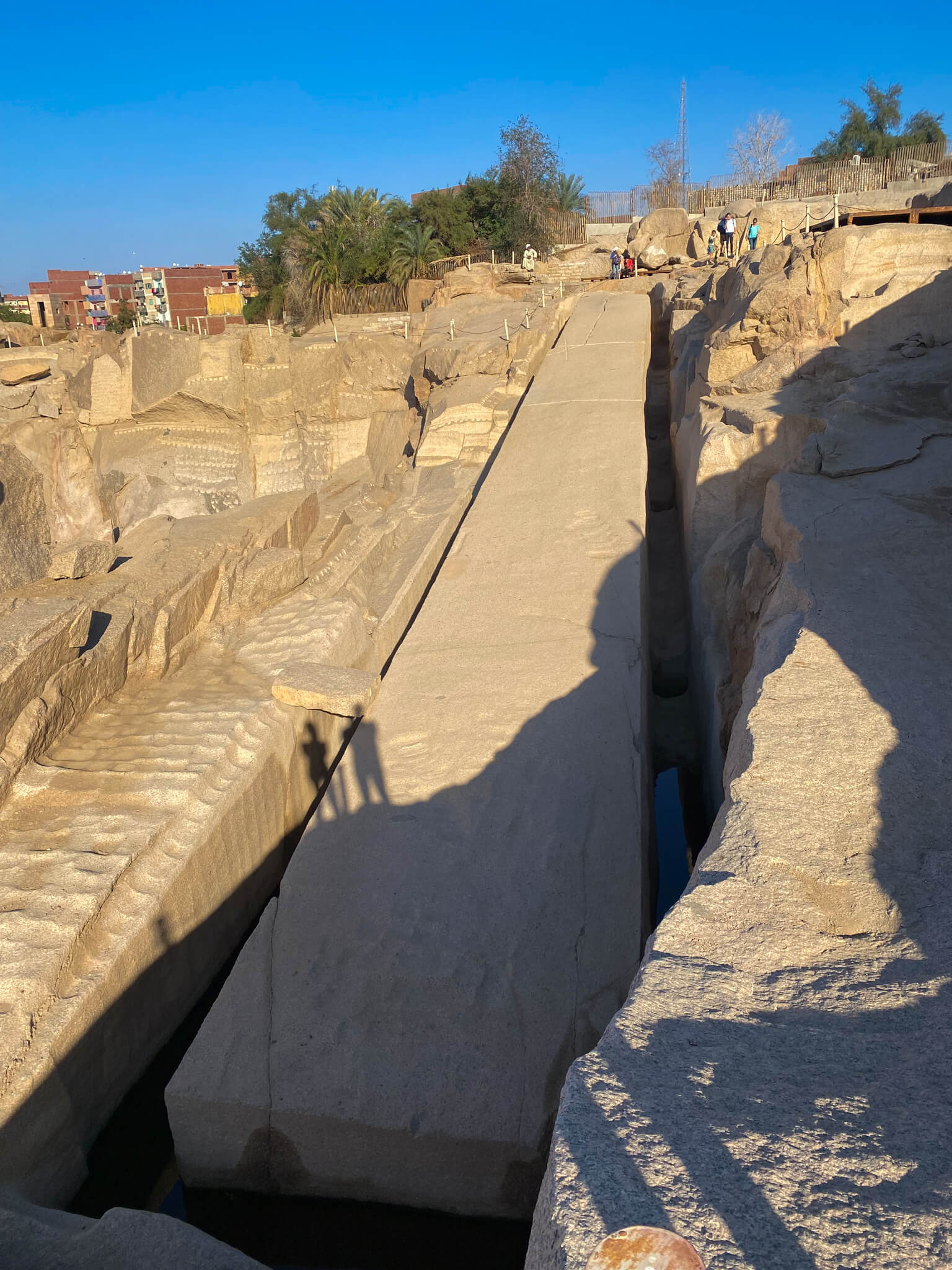
The monolithic unfished obelisk.
Safety in Aswan
Aswan is generally a very safe city and we had no issues during our visit. A lot of tourists visit the city, so the biggest problem is generally being ripped off. However, most people are very friendly and helpful to travellers, especially away from the main tourist areas. Outright theft is very rare.
The only area we felt less comfortable in was the area between El Sadat road and the site of the unfinished obelisk. This area appeared very poor and people were noticeably very cold towards us, even when we were trying to buy a bottle of water. We received less hostile looks when Anna covered her head with a scarf. This is a good reminder that, despite the tourists, many parts of Egypt are very conservative and it’s good to be sensitive to local customs.
Where to Stay in Aswan
Budget Chill: One of the best places to stay in Aswan is Elephantine Island. It somehow combines a beautiful Nubian old town with a distinctly local feel and numerous reasonably priced guest houses for tourists. It’s also nice to be one step removed from the chaos of downtown Aswan.
I stayed at Aswan Nubian House, which was simple, but pleasant and clean. A nice Nubian breakfast was included. However, if you look online you’ll find many options on Elephantine Island.
High End: If you really want to splash out and bask in the colonial splendour of a bygone era, the Old Cataract is the place for you. Prices start at around $250 a night.
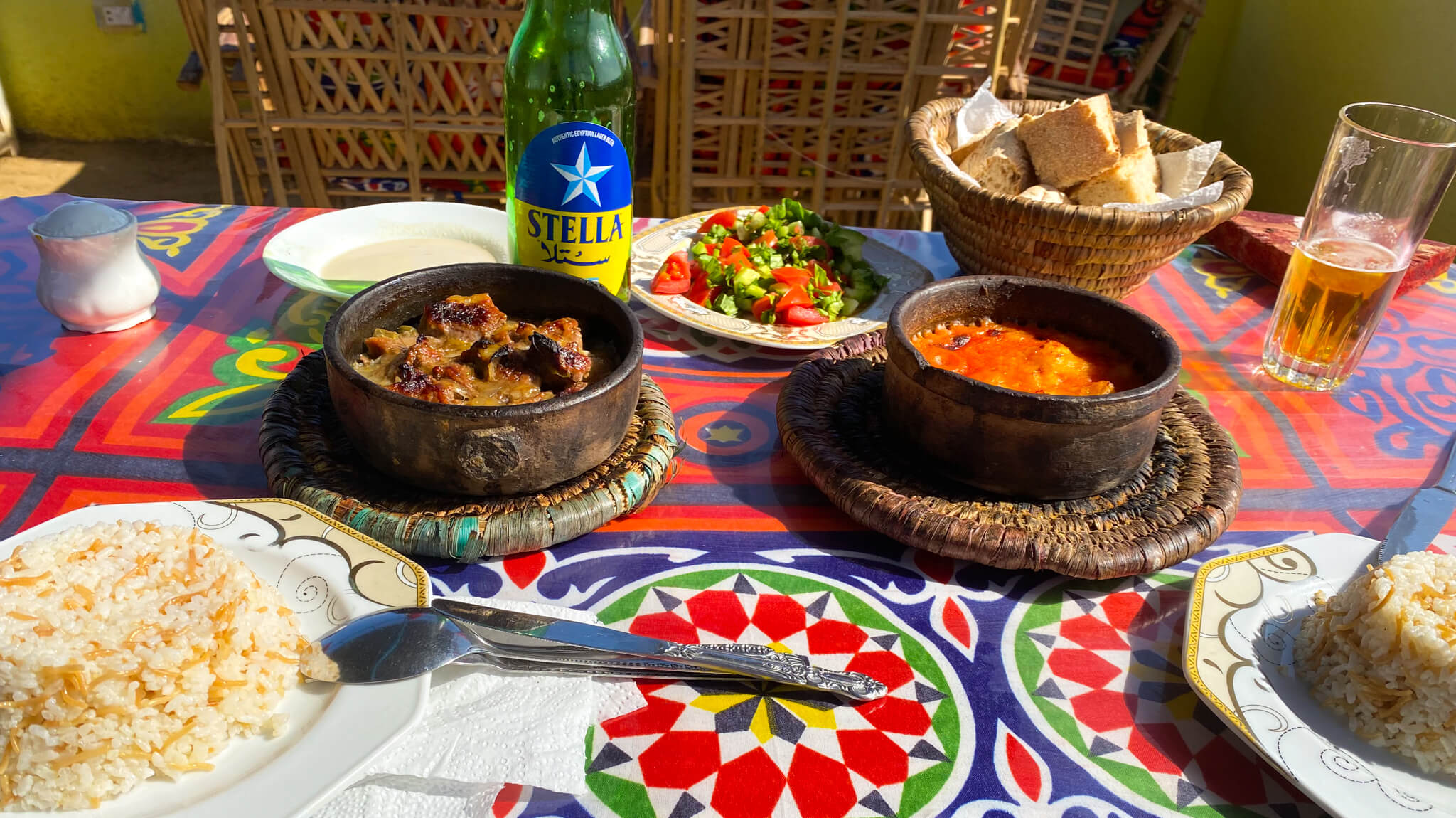
Eating stewed camel at the Bob Marley Café on Elephantine Island. It’s super touristy, but a good place to relax.
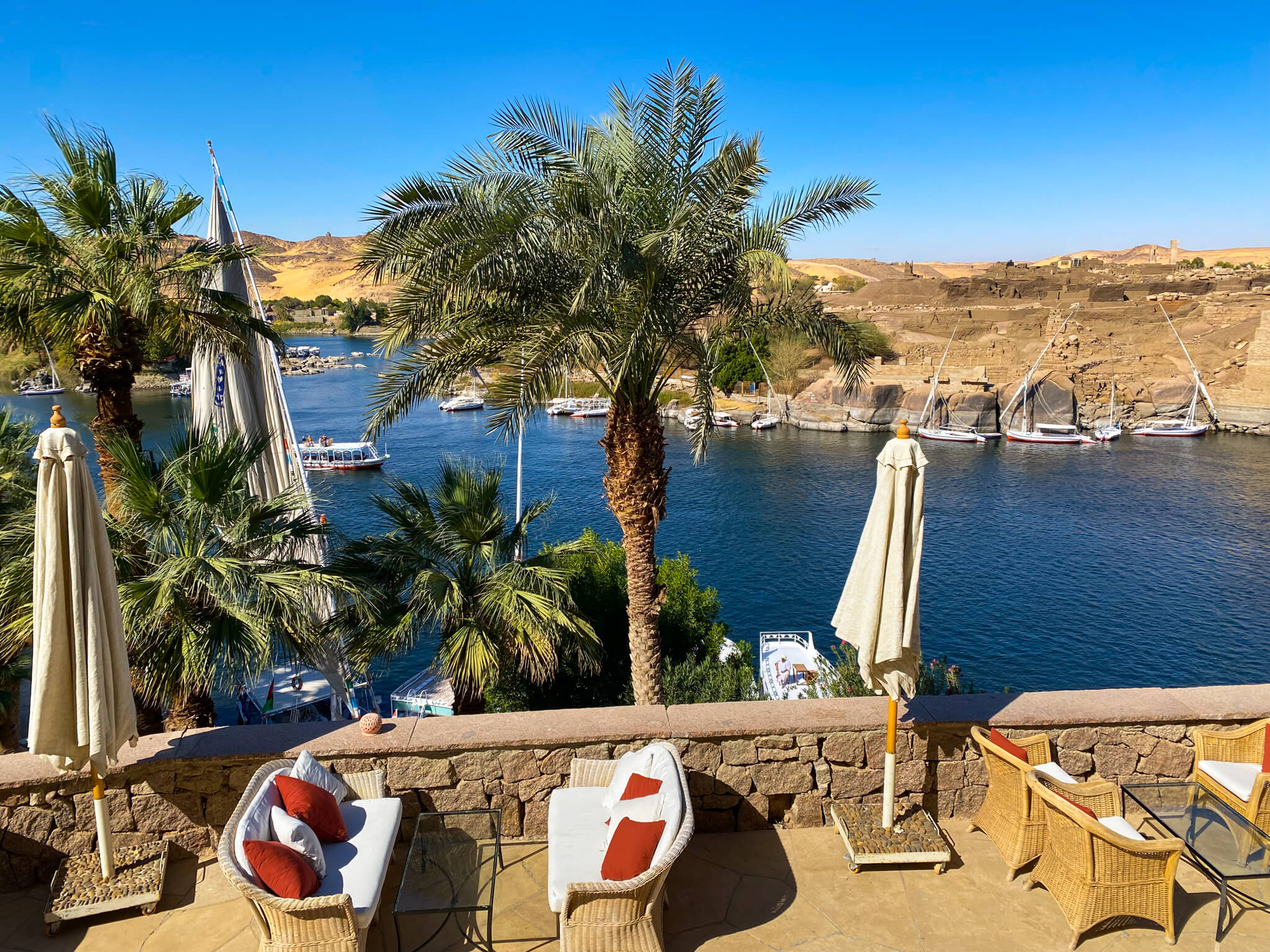
The terrace of the Old Cataract.
Getting Around Aswan
Many of the sites of Aswan are grouped around the waterfront and on Elephantine Island, but some are a little further away. Your main options for getting around are:
- Walking: This is a great way to see any city, as you’ll notice so many more things on foot than you would from a car window.
- Taxi: For further away destinations, in particular the bus and train stations, a taxi is the easiest option if you don’t feel like a long walk. Be careful to negotiate the price before setting off, as they’re not metered.
- Local buses: There are various local buses in Aswan. The difficulty is knowing where they’re going. If you want to try this option, stick out a hand to stop the bus and say your destination. The driver will then tell you whether he’s going there or not. It’s generally best to check the price as well. This can be tricky depending on how much English the driver speaks, but I always managed with a bit of sign language.
- Boats: For hopping back and forth across the Nile, ferries are the best and most economical option. Someone will usually be happy to hire out their boat to you if you’re not near a ferry stop, but be careful to negotiate the price before boarding.
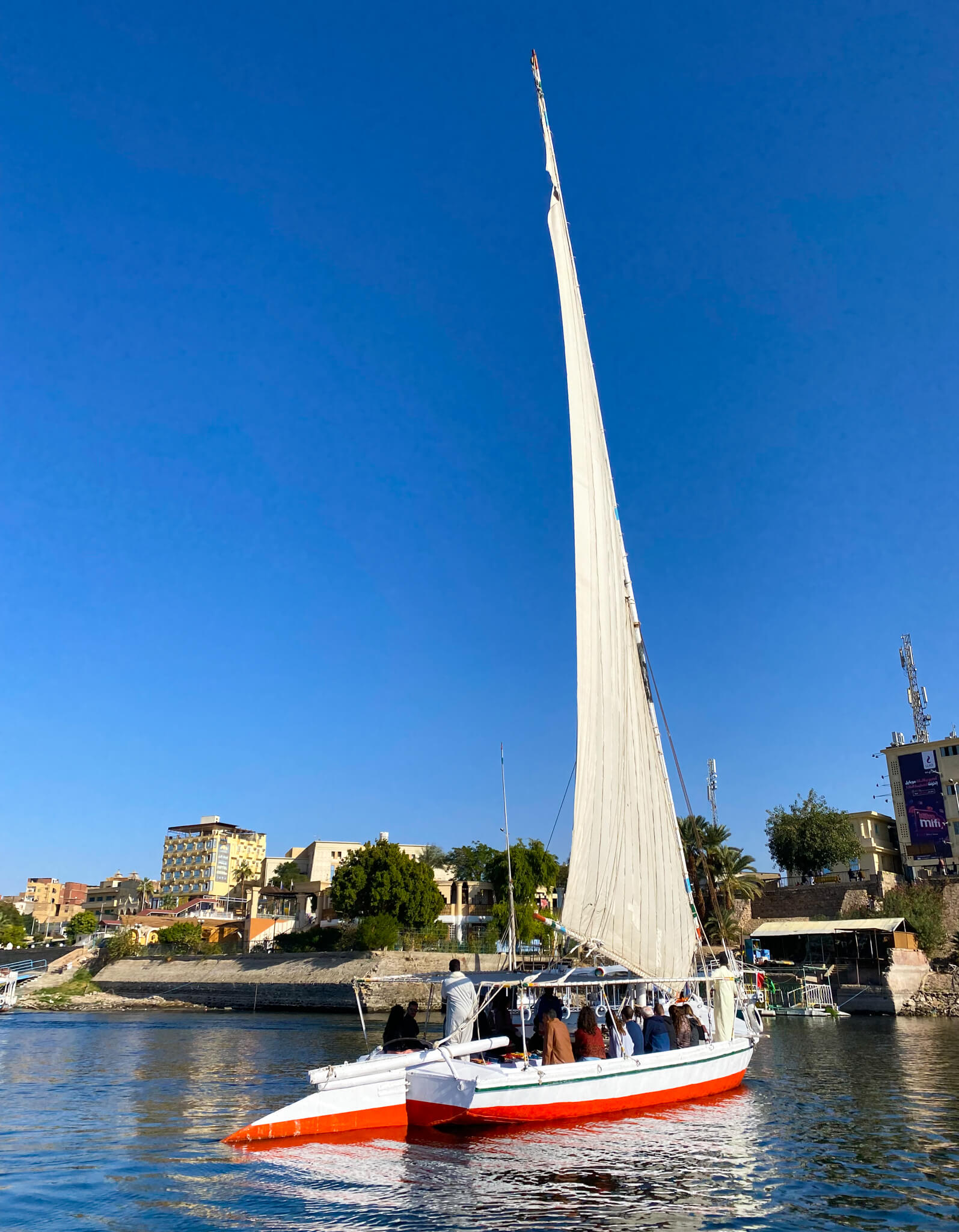
Many tourists opt to take a ride in a felucca, a traditional sailing boat. It’s more of a tourist activity than an actual means of transport today though.
Getting There and Away
There are several options for reaching Aswan, as follow:
Train: Since January 2023, Egypt started charging foreigners in USD for train tickets and prices increased significantly. However, train is still a reasonably cheap and relatively comfortable option from Cairo or Luxor. There are three types of tickets:
- 2nd class seat – around $30 for an overnight journey (the exact price depends on the train). The seats are large and reasonably comfortable and the carriages generally have AC.
- 1st class seat – these seats may be slightly more comfortable than the 2nd class ones, but I really didn’t notice much difference. Prices are around $50 for an overnight journey.
- Sleeper – these are often sold to tourists as the best option or, in some cases, the only option foreigners are allowed to take, which is bullshit. Sleeper tickets obviously have the advantage of allowing you to get a better sleep on overnight journeys, but they are astronomically expensive – around $120 for an overnight journey.
The journey time from Cairo is around 12 hours and from Luxor around 3 hours. However, the main issue with Egyptian trains is that they are so often late. I have taken them many times and the majority were late. In the worst case, a 12 hours journey from Aswan back to Cairo took 26 hours due to a rain shower that knocked out the points system (Egypt is not designed for rain!).
Bus: Long-distance buses connect Aswan with Cairo, Luxor and Abu Simbel. Buses are generally comfortable, although you will have less space than on the train. However, ticket are often less than half the price of 2nd class train tickets. Buses are also far more on time than the trains. As well as domestic buses, there are international buses from Aswan to and from Khartoum and Wadi Halfa in Sudan (but make sure you get a visa first).
Minibus: There are informal minibuses from many nearby towns and villages to Aswan, including Abu Simbel. These are a fast option for less-travelled destinations and can also be a useful backup if the larger bus is sold out. There is a rumour that foreigners are not allowed to take the minibuses between Aswan and Abu Simbel. It may or may not be true, but the reality is that no one checks (I took these, as did some friends, and there were no problems).
Air: Aswan is connected by air to Cairo and other cities throughout Egypt. This is the fastest way to travel, but obviously one of the more expensive options too.
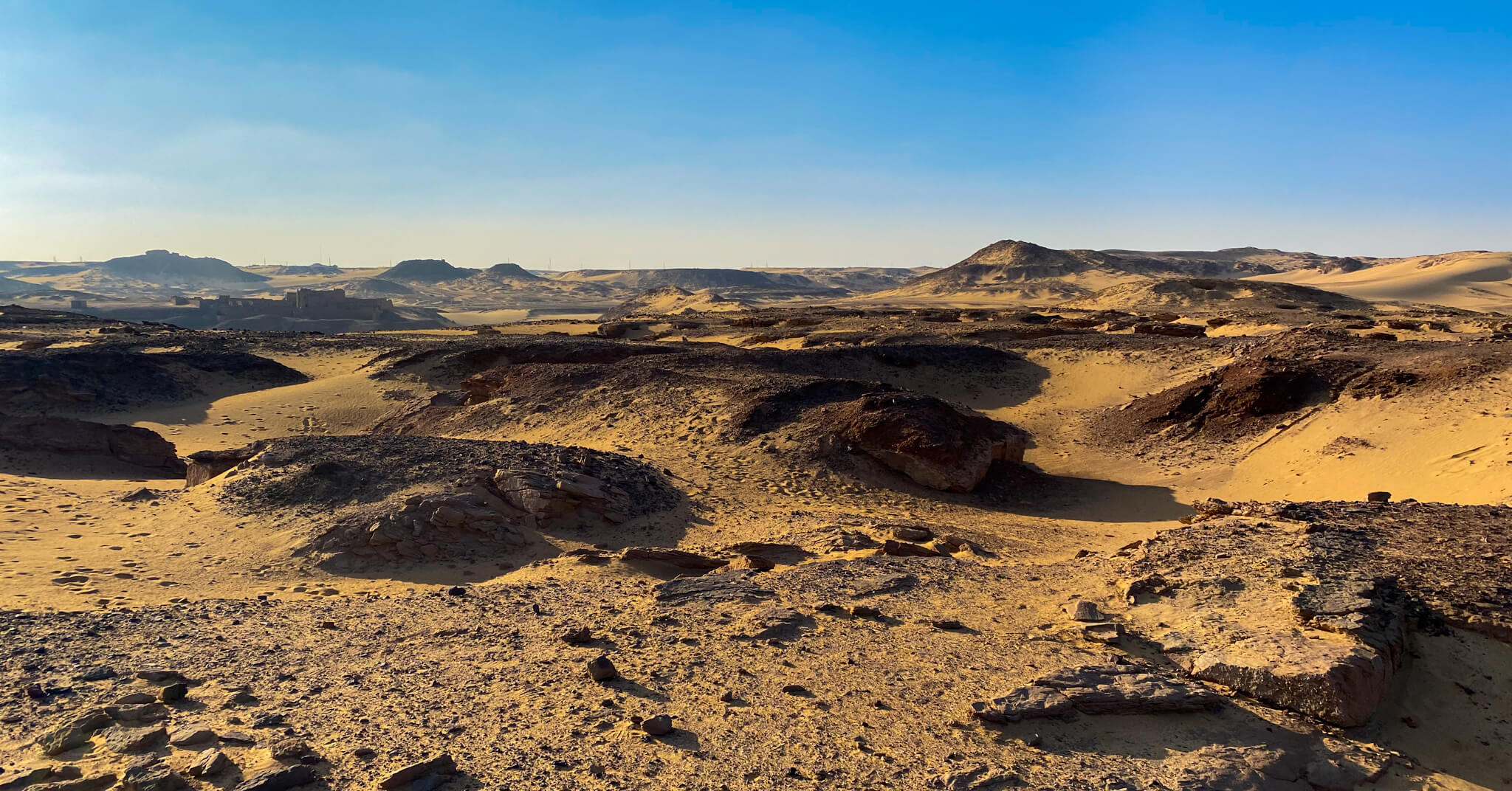
The deserts to the west of Aswan are a vivid moonscape of orange sand.
Alcohol in Aswan
As in most of Egypt, alcohol is not available in many restaurants in Aswan. However, the restaurants that cater to tourists, including the majority of the ones on Elephantine Island, generally have it.
Supermarkets generally do not sell alcohol, but Egypt has an interesting system of ‘duty free’ bottle shops (shops selling alcohol). If you’ve arrived in the country within the past 48 hours and have a boarding pass to prove it, you can buy imported alcohol without paying the tax. Downtown Aswan has a duty free shop in the same building as the Nile Hotel (here on Google Maps). If you’ve been in the country more than 48 hours, you can still buy alcohol that isn’t duty free, such as local beer.
More about Egypt
I’ve spent a total of about a month in Egypt on four separate trips, so I’ve seen a large part of the country. The major draw is, of course, its incredible history and amazing cultural sites, but it’s also a great place to chill out. For more travel tips and off-the-beaten track ideas, check out my other articles on Egypt:
Alexandria Travel Guide: Where to Go and What to See
Alexandria - Egypt's Mediterranean Gem Last Updated: 25 Feb 2023. Like a miniature and more-manageable version of Cairo on the Mediterranean coast, Alexandria is sadly overlooked by many travellers to Egypt. The city has a wonderful mix of historic sites, crumbling...
Siwa Oasis Travel Guide
Everything you need to know to enjoy travelling the Siwa Oasis, including the old town, the hot springs and delicious Egyptian cuisine.

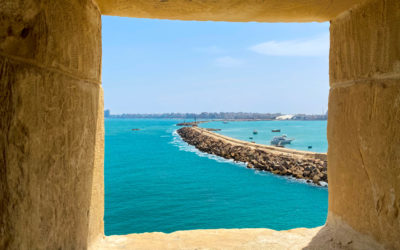
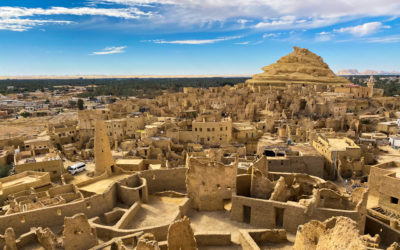
Amazing content Rowan! Never imagine seeing a mummy and not shitting my pants 😂 and not to forget, COOOOOOOL PHOTOS ❤️👍
Thanks Varsha, glad you liked it 🙂 Yeah, the mummy was a crazy surprise! I half expected it to suddenly sit up and… Maybe I’ve watched too many movies.